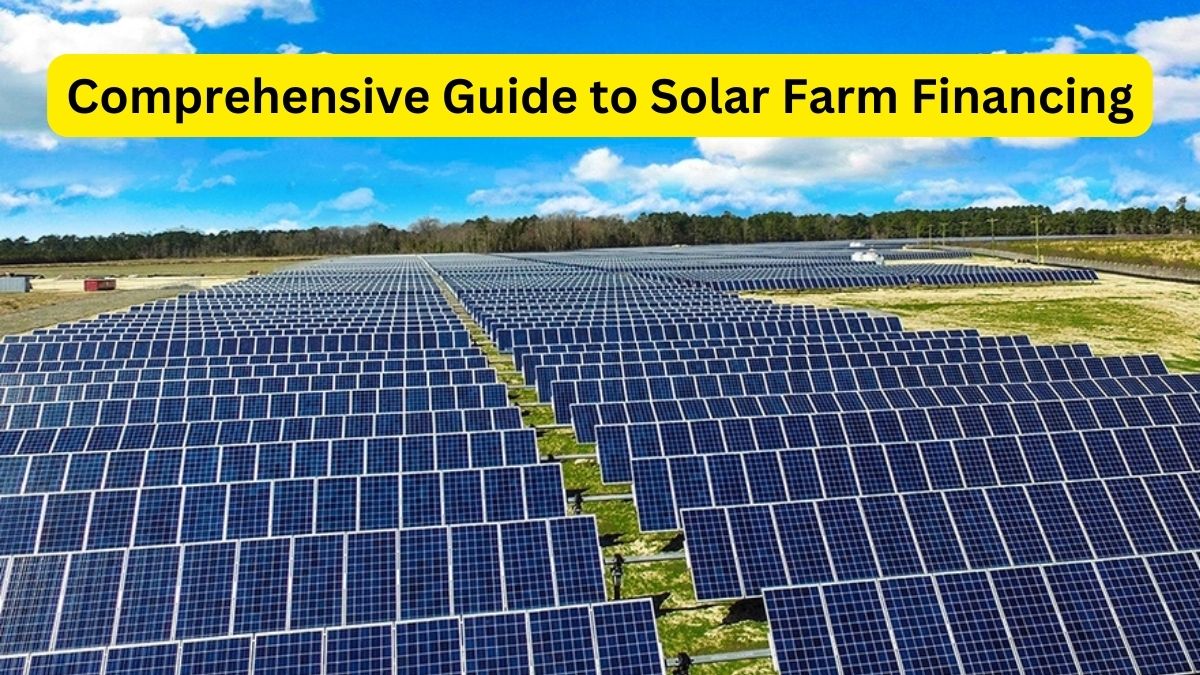Solar farms are growing in popularity. They provide clean energy and have environmental benefits. But financing a solar farm can be complex. Here’s a detailed guide to help you understand how to finance a solar farm project.
1. Understanding Solar Farm Financing
Solar farm financing involves raising money to build and operate a solar energy system. These projects can be expensive, so it’s essential to explore various funding options. The goal is to cover costs and make the project profitable.
2. Types of Solar Farm Financing
There are several ways to finance a solar farm. Here are the main types:
- Equity Financing: This involves raising money by selling shares in the project. Investors provide funds in exchange for ownership stakes. This method can be beneficial because it doesn’t require repayment like a loan. However, it may mean giving up some control over the project.
- Debt Financing: This is where you borrow money to finance the project. You repay the loan with interest over time. Banks and other financial institutions often provide debt financing. This method allows you to maintain full control of the project but requires regular payments.
- Lease Financing: In this arrangement, you lease the solar equipment from a provider. You make monthly payments, but the provider owns the equipment. This can be an option if you don’t want to buy the equipment outright.
- Power Purchase Agreements (PPAs): A PPA is a contract between the solar farm owner and a buyer. The buyer agrees to purchase the electricity generated by the farm at a set price. This can provide a steady revenue stream for the project.
- Tax Equity Financing: This type of financing is common in the United States. It involves investors who provide capital in exchange for tax benefits. These benefits include investment tax credits and accelerated depreciation. This method can significantly reduce the cost of the project.
3. Steps to Secure Financing
Getting financing for a solar farm involves several steps:
- Develop a Business Plan: Create a detailed plan that outlines the project’s goals, costs, and expected revenues. Include information about the location, size, and technology of the solar farm. A solid business plan is crucial for attracting investors and lenders.
- Conduct a Feasibility Study: This study assesses the project’s potential. It includes evaluating the site’s solar resources, potential energy output, and costs. A feasibility study helps determine if the project is viable and can support the required financing.
- Prepare Financial Projections: Develop detailed financial projections, including income statements, cash flow statements, and balance sheets. These projections show potential investors and lenders how the project will perform financially.
- Seek Out Financing Options: Research and approach potential investors, lenders, and financial institutions. Each option has its pros and cons, so consider which fits best with your project’s needs.
- Negotiate Terms: Once you have offers, negotiate the terms of the financing. This includes interest rates, repayment schedules, and equity stakes. It’s essential to understand all terms before agreeing.
- Close the Deal: After agreeing on terms, finalize the financing. This process involves signing contracts and completing legal requirements. Ensure all documents are in order and that both parties fulfill their obligations.
4. Managing the Financing
Once the financing is secured, managing it is crucial for the project’s success. This includes:
- Tracking Expenses: Keep a close eye on expenses to ensure they stay within budget. Regularly review financial reports to monitor progress.
- Meeting Repayment Obligations: If you have debt financing, make sure to meet all repayment schedules. Missing payments can lead to penalties or even default.
- Reporting to Investors: If you have equity financing, provide regular updates to investors. This keeps them informed about the project’s performance and builds trust.
Conclusion
Financing a solar farm can be a complex process, but understanding the options and steps involved can make it more manageable. By exploring different financing methods, preparing thorough financial projections, and carefully managing the funds, you can increase the chances of your solar farm project’s success. With the right approach, solar farms can be a profitable and sustainable investment in clean energy.
